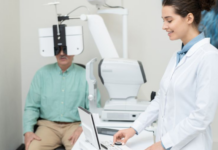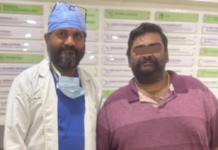New Delhi 04, Dec 2014:The extent of change and improvement in the healthcare system in India over the past decade has been significant. Some healthcare indicators like Maternal and Infant mortality rates have improved by over 40% during the last decade, however it is in pockets and rural India remains a challenge.
Some of the healthcare challenges are:
– Existing healthcare infrastructure is unplanned and is irregularly distributed. Over 65% of India’s 1.26 billion people live in rural India and only 15% of them have access to a primary healthcare facility and less than 10% to a hospital.
– There is a severe lack of trained doctors and nurses to service the needs of the large Indian population. There is only about one doctor for every 1700 people and a shortfall of more than 60% specialists at the CHC level. For example there are barely 800 critical care interventionists to serve the entire population in India.
– Affordability of quality care is a key concern for most of the population, both for preventive check-ups and treatment. Hospitals in Tier I cities are typically driven by use of advanced medical technology, thus raising the cost of treatment.
– To add to this the medical insurance penetration in India is very low. Less than 25% of the Healthcare expense for IPD in rural India is covered by Insurance.
In order to address these challenges the various stakeholders in India across the private and government sector need to innovate and collaborate to increase public private partnership (PPP) initiatives in prevention, diagnostics, delivery and management of chronic diseases. There is a strong need for localized solutions that are specific for India and technology has made healthcare affordable.
Technology and affordable Healthcare
The fusion of technology and healthcare is moving at warp speed, and companies have produced many groundbreaking medical devices. But for using many of these devices requires us to visit a hospital. With the advancement in the internet and communications infrastructure, going to the hospital might look a lot different in 10 years! The technologies that can play an important role in addressing the access challenges in India are mobile applications, Cloud, Analytics, Sensors and Collaborative tools. Philips has embarked to apply mobile, digital and cloud technologies to improve patient outcomes through care coordination and patient empowerment across the health continuum. Philips Innovation campus (PIC) in Bangalore has deployed several such solutions across India which is making a significant impact to society.
Healthcare and mobility
There are over 800 million mobile connections and close to 250 million people who access the internet. By 2020 the smart phone penetration in India would be close to 40%. In the current five year plan it is proposed to provide broadband access to every village in India. Leveraging the broadband infrastructure along with mobile technology to provide “telesolutions” can help in extending quality care to primary and secondary care centers and also remote villages through Care workers and NGO’s.
“Sanjeevini” is a mobile solution that helps Asha workers in the Udupi district of Karnataka, where they directly feed data on to a smartphone which then gets uploaded to a central server at the Manipal hospital which can be viewed by doctors which helps in screening patients for potential complications.
Another solution from Philips is remote monitoring of ICU patients. Over 50% of deaths in a hospital happen in the Intensive care unit (ICU), and Philips Tele ICU solution extends the reach of the interventionists to remote towns and villages leveraging the broadband infrastructure, through a hub and spoke model. The extension of this to a tablet device enables interventionists to monitor their patients on the move. There are over 1000 ICU beds across India which is covered by this solution already and it is growing.
Point of care devices for Diagnosis
Technology has made early diagnosis possible with point of care devices. With Over 50 Million cardiac patients in India there is a need for the early detection of a Cardio Vascular Disease (CVD). Philips has developed a state of the art diagnostic quality tablet based ECG machine which is less than the size of the palm. The ECG that is captured by a trained nurse or a physician can be sent using the mobile network to a cardiologist in a tier-1 city in real time, which allows quality diagnosis to be done in a few minutes. There are similar solutions developed from PIC for the screening of cervical cancer too using a mobile phone.
Healthcare and Cloud computing
Cloud computing is a computing model in which shared resources are allocated dynamically to create a highly flexible and scalable computing environment. Hospitals are currently burdened with large data sets comprising of radiology images, patient data in Electronic health records etc. By providing hardware and software resources on-demand, the cloud approach allows organizations to treat computing like a service, and to pay as they use. The health care sector is beginning to move to cloud-based platforms, despite the common belief that compliance and security issues would hinder the shift. The major driving factors are the need to increase storage and compute capacity using limited investment and the ability to centrally manage patient data that now exists in silos. The direct benefit to the Indian healthcare system could be by connecting all the primary, secondary and tertiary healthcare centers with the data relating to patients hosted on the cloud. This will help reduce the upfront investment and the operational cost and also will provide a gateway to leverage telemedicine.
Data Analytics at work in healthcare
Analytics in healthcare encompasses the technologies and skills used to deliver business, clinical and operational insights into the complex interdependencies that drive clinical outcomes, costs and oversight.
There is large amount of data that is generated by various devices in a hospital. Analyzing this data over a time period can really help in better service by monitoring and optimizing the usage of the device. Another area that Philips is already leveraging their expertise in helping hospitals become more efficient through analyzing the vast amount of operational data collated over time in the hospital.
Having the right information at the right time is critical in the medical field. Doctors are able to quickly and easily access relevant patient information, including medical history and body stats like blood pressure, heart rate, and blood glucose levels. Analyzing this time series data helps in making clinical decisions in real time. This tremendously improves the quality of information and patient care. PIC plays a key role in these Data Analytics activities working with different markets and Hospitals in India.
Conclusion
Medicine is entering an age of democratization as power shifts from hospitals, doctors and other caregivers to patients, potentially leading to dramatic health care improvements. In the developed world consumers will now start getting more power in managing their own health. In developing countries like India this will help to reduce cost and improve access to healthcare. The rising cost of healthcare across the world is best managed by applying technologies like Mobile, Cloud computing, Sensors, Data Analytics, Collaboration tools etc. This will help to address the growing needs across the health continuum, from wellness, prevention, diagnosis, treatment and management in the hospital and further extending this to the home or primary care centers for chronic disease patients.
In India improved workflow in hospitals, reduction of infrastructure costs by leveraging the cloud, tools to help in faster and early diagnosis of a disease state can help reduce the cost of delivery. Trained nurses with low cost tablets with appropriate applications can help in extending the reach of doctors and specialists to areas where care was not available before. The cost of post operative care can be easily reduced through a combination of remote monitoring and video conferencing by ensuring that patients don’t have to travel to cities for regular checkups. The opportunities to deploy technology to address the healthcare challenges in India are limitless; however this requires a close collaboration between the Government and Private sector to deploy innovative solutions that are impactful to society.
CCI Newswire
























